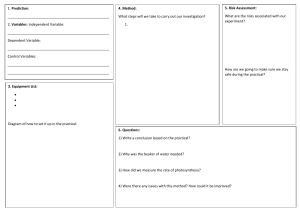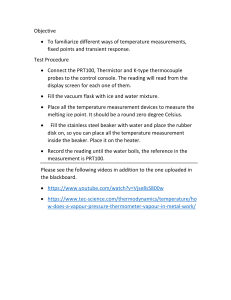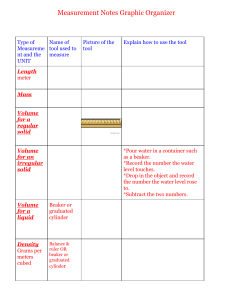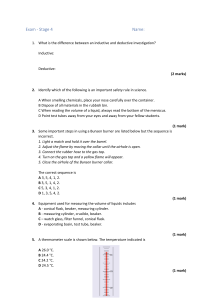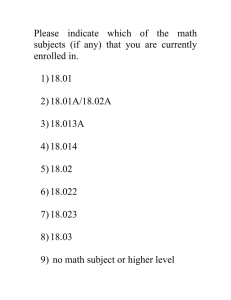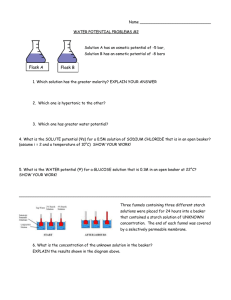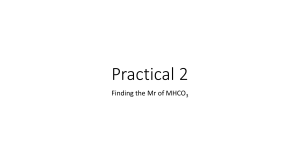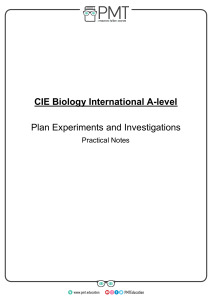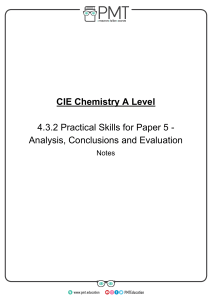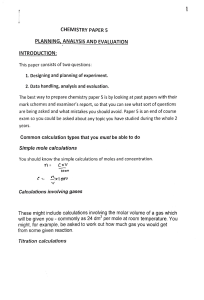IGCSE Chemistry: Evaluating Methods & Improvements
advertisement
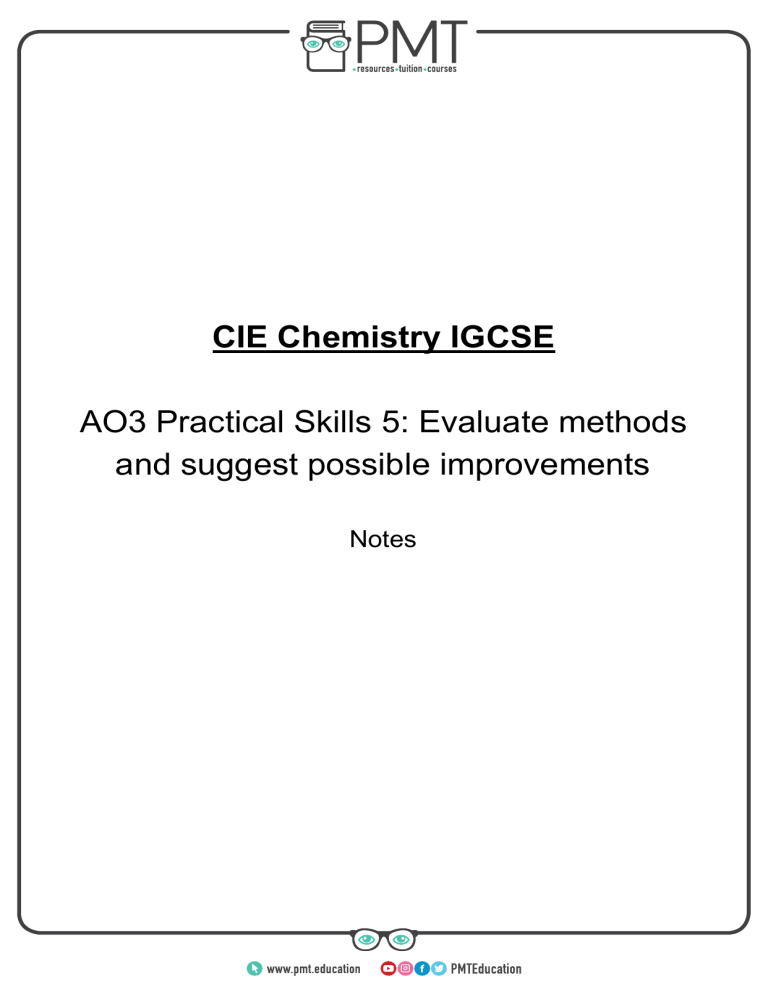
CIE Chemistry IGCSE AO3 Practical Skills 5: Evaluate methods and suggest possible improvements Notes www.pmt.education Evaluation and analysis of experimental methods Introduction An important skill in chemistry is being able to describe, explain and comment on experimental techniques and methods. This includes: How a proposed method could be improved Examples: ● Carrying out repeats to identify anomalies and calculate a mean. ● When observing a colour change in solution, does the method suggest placing a white tile underneath the beaker to better observe the colour change? How the apparatus used could be improved Using apparatus with a higher resolution improves the precision of your readings. Examples: ● Using a pH probe instead of universal indicator. ● Using a 25 cm3 measuring cylinder instead of a 50 cm3 flask to measure out 20 cm3. Identifying any steps that could cause error As well as identifying areas that could cause error you may also have to suggest how this error could be minimised. Examples: ● An experiment used to investigate the water potential of potatoes requires wet potatoes to be dried, in this example, drying should be done by the same person for the same length of time with each potato piece. ● An experiment which investigates rates of reaction uses the reaction between hydrochloric acid and sodium thiosulfate which produces a white precipitate, causing the solution to turn cloudy. A white cross is placed under the beaker and the time taken for the black cross to disappear is measured. The exact point when the cross disappears is subjective and the time would vary from person to person, so the same one person should say when the cross disappears each time. If you were to repeat an experiment, what changes you would make and why This can include changes to the method, apparatus or the range and intervals of the independent variable. Examples: ● If a trend was difficult to see then more values of the independent variable should be tested, such as instead of taking measurements at pH 6, pH 7, pH 8 and pH 9, next time you would test every 0.5 pH units from 5.5 to 9.5. ○ Testing over a larger range and at smaller intervals Explaining why certain techniques / apparatus are used over others Examples: ● A good technique for measuring mass is the ‘weighing by difference’ method and is more accurate that taking a single mass measurement. The method - first weigh the www.pmt.education ● container with the solid in it, then add the solid to the reaction and reweigh the container, the difference between these two values would be the mass of solid added. This comes back to the resolution and precision of the apparatus ○ High resolution isn’t always best though - it would be better to measure 100 cm3 of a liquid using a 100 cm3 beaker that had divisions every 10 cm3 instead of measuring out 10 cm3 in a 10 cm3 beaker with divisions every 1 cm3 - but having to do that 10 times to reach 100 cm3! Identifying variables that need to be controlled and how you would control them ● These variables are called control variables and they are needed in order to carry out a ‘fair test’. If the variables are not controlled, the data produced is invalid. ○ It enables the effects of changing the independent variable alone to be observed and recorded. ● A fair test is one that controls all of the variables in an experiment except one - the one that you, the experimenter, changes. This is the independent variable and the thing that changes as a result of changing the independent variable is the dependent variable. ○ Because it is dependent on the other variable. ● Examples: ○ Controlling temperature - place the required flask/beaker etc. in which the experiment is taking place in into a water bath. The temperature in the water changes much more slowly and is much more constant than the temperature in the air. ○ Using the same volumes / concentrations / masses of chemicals used besides the independent variable in repeats. If the rate of reaction of two solutions is being measured at different temperatures, the concentration and volumes of the solutions must be kept exactly the same. ○ Controlling pH - a pH buffer can be used to limit the changes in pH during a reaction www.pmt.education
